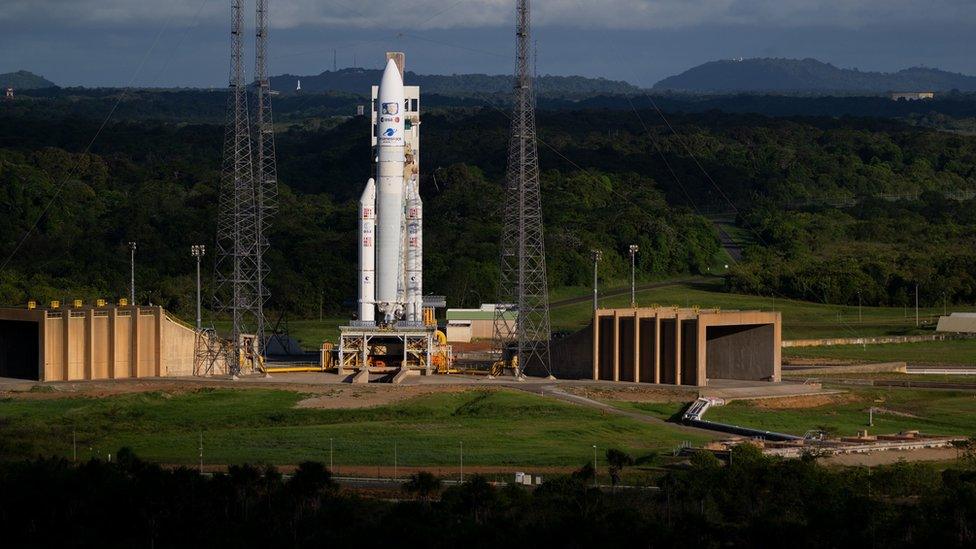In Pictures: Space mission to Jupiter's moons blasts off
- Published

The spacecraft, Jupiter icy moons explorer (Juice) ahead of its launch which was delayed by a day due to bad weather. The Jupiter Icy Moons Explorer (Juice) project is sending a satellite on an eight-year journey to reach the icy moons of the planet.
The Ariane 5 rocket launched the Juice mission from the European Space Agency's spaceport in French Guiana at 13:14 BST (09:14 local time) on 14 April.
At the European Space Agency's mission control in Germany staff watch and wait for the Juice to separate from the last section of the rocket, the first thing to detach was the solid rocket fuel boosters which got Juice up into space.
There is applause from mission control as full separation from the Ariane5 rocket is completed. The spacecraft will now use a gravitational sling-shot (like a catapult) technique around Earth and Venus to give it enough energy to reach Jupiter.
An artists' impression of the Juice spacecraft being released into space. Following this moment there was a short wait before finally mission control got a signal from the satellite. There was then confirmation that the solar wings had opened to give Juice power to run.
And this is where it is heading, to Jupiter's three icy moons. There is good evidence that these icy worlds - Callisto, Europa and Ganymede - hold oceans of liquid water at depth. But we won't know if that is true for a while - it will take eight years for the satellite to reach the Jupiter system, travelling four billion miles from Earth.
- Published13 April 2023
- Published21 January 2023
